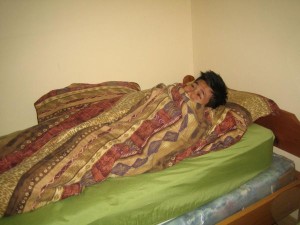Hypothermia
When your body is exposed to cool environments with heavy wind and high humidity for

long periods of time, its natural mechanism of regulating the normal body temperature fails leading to a drop in body temperature. When the body loses more heat than what is being produced, the net result is a low body temperature below the normal temperature i.e. 35 C or 95 F.
Insufficient clothing or wrapping in damp and cold areas or suddenly submerging your body into cold water can lead to hypothermia which results from a drop in body temperature.
Signs and symptoms
Sufferers may incur signs and symptoms slowly. People often experience impaired memory and balance, therefore, they do not ‘act fast’ when it comes to seeking immediate medical attention. The following are the symptoms and signs of hypothermia:
- Shivering
- Pale and cold skin
- Slurred speech
- Loss of balance and coordination and impaired motor control (fidgety hands)
- Listlessness
- Confusion
- Impaired memory
- In infants, cold, bright red skin
Risk factors
Infants, young children and older adults are usually prone to suffering from hypothermia. The following are the remaining risk factors that make sufferers more susceptible to hypothermia:
- Impaired judgment
- Mental illnesses such as Alzheimer’s disease
- People without shelter, caught in the cold
- Intoxicated people
- Malnutrition
- Hypothyroidism
- Cardiovascular disease
Treatment
- Safety first! Do not rush towards the casualty to help him without confirming that you are properly secured. Make sure you are properly clothed so that you do not get caught in the cold as well.
- Check if the victim is breathing. Consider the ABCs of first aid: Awake? Breathing? Continuous Care.
- Take the person to a warm, dry environment (indoors).
- Seek medical attention if the following signs and symptoms appear in the casualty:
- Fidgety hands
- Slurred speech
- Confusion
- Impaired balance
- Coma
5. Remove all wet clothing and put on some dry clothes.
6. Cover the casualty with a blanket, preferably an electric one.
7. You may apply heat packs on the casualty’s armpits, neck and genitals.
8. If the victim is conscious and is able to follow instructions, allow him to drink a warm, non-alcoholic drink.
Considerations
- The casualty may stop shivering but this does not mean that the condition has gotten better. Shivering is one of the body’s natural mechanisms to conserve body heat. As hypothermia develops, shivering may stop, indicating that the condition is getting worse.
- The underlying cause of unconsciousness may be linked to several other medical conditions.
- Alcohol does not make the body feel warmer; it simply flushes warm blood towards the skin. The blood is easily cooled once it’s near the outside environment, thus allowing hypothermia to progress at a faster pace.
- Remember that the casualty may also be suffering from frostbite.
- When victims of hypothermia begin to recover, blood from the extremities is channelled towards the core of the body leading to a drastic drop in body temperature. This aggravates the condition and may result in cardiac arrest. If the victim collapses, begin CPR immediately till help arrives.
Learn More About Hypothermia
To learn more about Hypothermia, including how to recognize, manage and prevent it, take a “hands on” training course via St Mark James. The following courses include education and training in managing hypothermia:
- Standard first aid – Click here to find a course in Windsor.
- Childcare first aid – Click here to find a course in Windsor.
Video Related to Hypothermia
